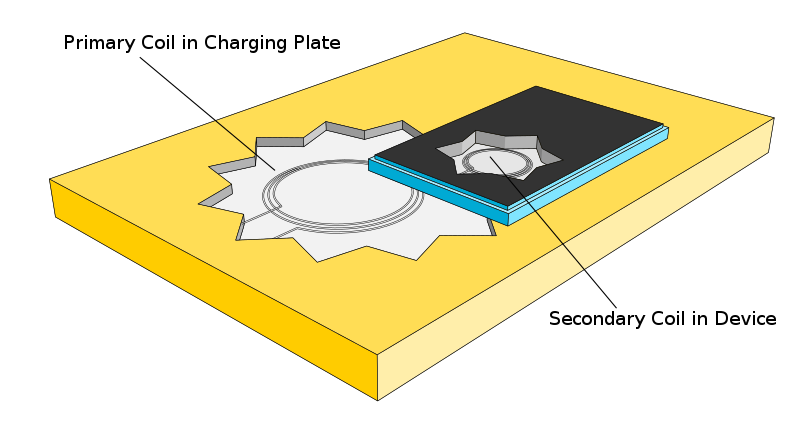The iPhone 5 News Blog News Feed |
| iPhone 5 News Blog Editorial: How The Tech Media Overthought the White iPhone 4 Posted: 28 Apr 2011 08:45 AM PDT
No A5 chip. No IOS 5. No 8 megapixel camera, or any other purported feature that will most likely find its way onto the iPhone 5. Instead, the white iPhone 4 lived up to its name flawlessly: nothing more or less than a white version of the original iPhone 4. And yet, when you compare the end result of weeks of rumor-milling in the tech world, what we ended up with is far from what all the speculation promised us. Here on the blog, the white iPhone 4 was quite obviously not going to be a game-changing device. As I explained in a previous article, the purpose of the white iPhone 4 is simply to buy time in lieu of a later-than-usual iPhone 5 release and give the iPhone 4 lifecycle an extension. While it may be true that few people remain in the marketplace that are true white iPhone 4 holdouts, whatever number that “few” represents is certainly a large enough number to substantiate Apple’s move to pour some white paint into their plastic molds and churn out a few million units of the white iPhone 4. In the end, it is a very obvious, inexpensive, and effective way for Apple to sell more product. If it was so obvious, then why did the tech media get so confounded with unrealistic expectations about the white iPhone 4? Why did they get it so wrong? Perhaps in a kind of subconconscious response to the growing reality that the iPhone 5 isn’t going to hit the stores until the end of the Summer at the latest, the tech media managed to weave an exponentially complex tapestry of rumored iPhone iterations, some of which are still rumored to appear in the interim. Not long after the white iPhone 4 rumors gained traction, fresh rumors abounded about how app developers were to receive a developer-only, A5-equipped device, tagged the “iPhone 4s,” as a means of getting a head start on next-generation app and game development. The iPhone 4s would be nothing more than a souped-up iPhone 4. And yet, it only took hours for the tech media to meld the white iPhone 4 and iPhone 4s into a new rumor altogether. What started as a reasonable expectation for a white iPhone 4 turned out to be a white iPhone 4 with improved features. The expectation was that this new white iPhone would feature the beefed-up A5, maybe the 8 megapixel camera, and a host of other new features that would make it decidedly un-iPhone 4′ish. Even though there is virtually no other marketing pattern in all of electronics to support such a preposterous idea, and that the advent of an improved white iPhone 4 would effectively kill the growing anticipation of the iPhone 5, it was this perspective that dominated the media. Then, the rumor mutated. For another week or so, we were treated to an audacious new iPhone release schedule from a host of different tech media outlets, claiming that we would have the white iPhone 4 in late April, followed by the iPhone 4s in June, followed by the iPhone 5 in the Fall, followed by the iPhone 6 in early 2012. This is when I started to get angry, leading me to the unfortunate circumstance of calling a bunch of people whose names I don’t even know “stupid,” which you can read with great mirth on the iPhone 6 News Blog. Heck, even level-headed iPhone 5 News Blog lead columnist Charles Moore constructed an entire post about the dizzying rumors of this torrid iPhone release schedule here. During this time, dozens of comments flooded in from people who literally needed to be talked down from leaving the iPhone franchise altogether over this cocophany of rumors. In this way, blogs who report honestly on iPhone news have become a kind of detox from all the misleading and irresponsible reporting going out into the mainstream — sort of like iPhone 5 outreach centers. In essence, we’ve all become the iPhone 5 Truthers, exploding unfounded rumors by way of one tried and true approach — common sense. Common sense indicated to us from the beginning that the white iPhone 4 would be just that: a big hunk of white plastic, with maybe a few different cosmetic features to ensure that not too much light would bleed into the camera or proximity sensors. And yet, here on Thursday, April 28th, the tech media and a google of iPhone devotees are just waking up to a self-induced level of disappointment over a white iPhone 4 that didn’t manage to live up to expectations, even though it lives up to its namesake perfectly. The good news is that there is a teachable moment here — something positive to take from the rubble of strewn white iPhone 4s along the trail of rumors leading to the iPhone 5: don’t believe the hype. It’s important to remember that tech blogs have a vested, cynical, and monetary motivation to inflate, conflate, and mis-state the very little bit of actionable intelligence that we receive about the iPhone 5 and all other iPhone stops in between. And because of the nature of the press, few if any tech pundits ever take responsibility for irresponsible reporting; they only take credit for when they get the story right. Which, in the case of the iPhone, is only very rarely. |
| Wireless Charging For the iPhone 5 May Lead To Poor Battery Performance Posted: 28 Apr 2011 03:03 AM PDT New rumors suggest that wireless charging could be coming to the iPhone 5. But is wireless “inductive charging” a reliable enough technology for the next iPhone? Scan the recent iPhone 5 rumor mill news and you’ll see some new reports indicating that Apple has a few compelling patents on file that lead tech pundits to believe that the iPhone 5 could possibly feature next-generation wireless battery charging. Among the more developed articles on this purported new development is FoneHome’s article, which explains that Apple’s wireless charging patent features a series of docking models: “Built into these docks would be an inductive coil. Once placed in close proximity to a device that also possesses one, an alternating current is passed from the base to the portable unit, which is then converted to DC power. Hey presto – you have a charged iPhone battery without ever having to directly plug it into anything. Interestingly, inductive coils can also be used to transfer data.” You can read their entire article here.
To be sure, battery technology — particularly for mobile devices — always remains a hot topic, since iPhone users understand intuitively that better batteries means longer, more extended mobile computing of advanced apps and features. All you have to do is take a look at the results of the poll at the bottom of our iPhone 5 Features page, which indicates that an “improved battery” comes in third of twenty possible new features for the iPhone 5, ahead of much sexier features such as “e-ink/retina displays,” “smart bezels,” and “NFC technology,” to name a few. Even though the battery on an iPhone isn’t a very interactive feature, iPhone users understand its critical importance.
Of course, so too does the average tech blog, which is why taking an obscure Apple patent and crafting it into the next big iPhone 5 rumor is an easy way to garner a lot of attention and web traffic.
If docking your iPhone or plugging it in for a charge seems incredibly laborious to you, then the idea of being able to just lay your iPhone 5 down on a charging plate at the end of the day probably seems like a groundbreaking idea. And if this is the case, then Apple will be equally excited to sell an expensive wireless charging peripheral to go with the iPhone 5, thus exponentially increasing their profit margins.
But before we get ahead of ourselves, it’s important to note that wireless charging has been around for quite some time now, and it is not known to be the most reliable technology when it comes to charging. It could, in fact, turn out to be a disappointing feature for the iPhone 5 if Apple doesn’t make some considerable changes to the current technology.
Wireless charging, also known as induction charging, is known to fail at fully charging batteries. Electronics Warehouse has an interesting article that compares induction charging to the use of NiMH rechargeable batteries that were charged using AC power. The article quotes IGN on the issue of using Nintendo’s induction charger for the Wiimote, saying,
“Transmitting energy wirelessly, as you can imagine, is not nearly as fast or effective as transferring it through a physical connection, as such, it takes a significantly longer time to fully recharge the battery pack. To fully charge an empty battery, a Wiimote has to be placed on the charger for somewhere between six and eight hours; a pretty lengthy bit of time, no doubt."
It really should be no revelation to gadget users that AC power remains king when it comes to charging batteries: DC power, such as the power used when charging with a cigarette lighter in your car — is historically underpowered compared to plugging your smartphone directly into an AC wall socket. The same is true with induction charging: although the base unit plugs into the wall alla an AC plug, the current that flows from the charger to the device is purely DC.
All of this being said, Apple has demonstrated over the years that they are technology leaders when it comes to rechargeable batteries. In fact, they have spent copious amounts of money, time, and resources on making bigger, bolder, better batteries. If the iPhone 5 ends up with wireless charging features, chances are that it will be the cream of the crop in terms of inductive charging. But no matter what, wireless charging will always be DC-powered.
|
| You are subscribed to email updates from The iPhone 5 News Blog To stop receiving these emails, you may unsubscribe now. | Email delivery powered by Google |
| Google Inc., 20 West Kinzie, Chicago IL USA 60610 | |


